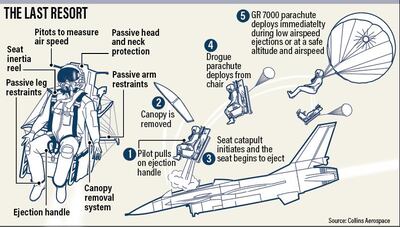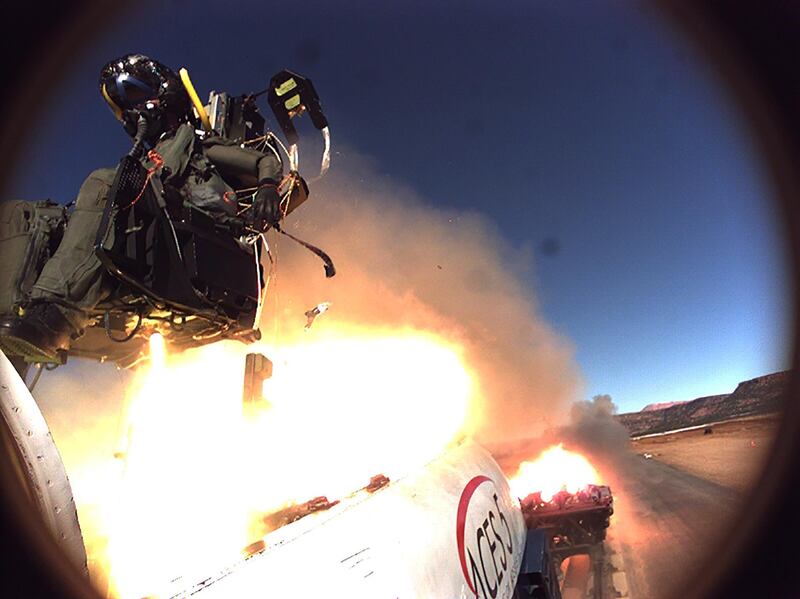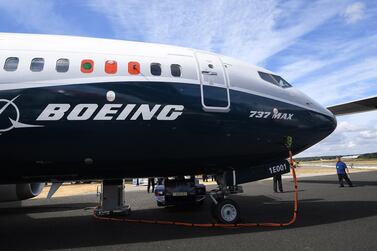A fighter pilot is hurtling over enemy territory on a top-secret mission. Air defences hit the jet and the plane goes down. Now there is one part of the jet that simply cannot fail.
Ejector seats seemed to be the most unloved element at the Dubai Airshow on Tuesday. Most people were carried away by missiles, drones and double-decker passenger planes littered across Dubai World Central's aprons and exhibition spaces. But ejectors are arguably the most important part of an aircraft.

The US Air Force only a few weeks ago ordered thousands of them. In one of the biggest upgrades in decades, it will fit thousands of fighter jets with new ejector seats. The American defence company Collins Aerospace won the huge contract with its “aces five”.
“Pilots fly over hostile places so you need to be able to hit the ground in a condition to escape and evade capture,” said Don Borchelt, director of business development and a former US fighter pilot.
The scenario is relatively simple. Pilots pull on a lever when flying no lower than 1,524 metres and no faster than 1,100kph. The pilot's canopy flies off, a catapult forces the seat up before a rocket takes over and throws the pilot out and forwards and the parachute opens up. The whole process is over within seconds but pilots can be exposed to G-Force 12 – meaning twelve times the weight of your body.
“Everything else in the plane can fail. Never the ejector seat,” said John Hampton, Collins Aerospace chief engineer on the project. “That’s your last chance.”
The seat being replaced by the US has been used since 1978 and is credited with saving more than 650 lives. But the upgrade also aims to drastically reduce injuries caused to pilots during the descent. “Now we can save the life and also reduce injuries," said Mr Borchelt.
The reason for the upgrade is that pilots today wear much heavier helmets because of advanced electronics so a special support has been made to cradle the head if a pilot ejects. New arm and leg restraints prevent injuries caused by flailing limbs. The seat additionally comes with a new parachute that allows for a slower descent, and more control means pilots can avoid power lines or trees.
“You need to hit the air as slow as you can,” said Mr Borchelt. “And hold on tight to the ejection handle to prevent flailing injuries from wind blast. Wind blast can cause dislocation and even death.”
Officials would not reveal a precise cost for the seat apart from saying in the region of six figures in dollar terms.
Mr Borchelt spent about 20 years flying the F15 for the US but never had to bail out. Still his advice is simple. “Don’t delay the decision,” he said. “You bail.”








